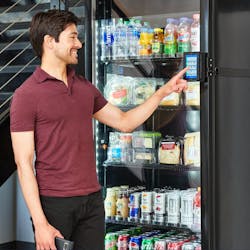While perusing technology news for VendingMarketWatch.com, I came across the inspiration for this blog. It was an article called Personalization, Mobilization, And The Fight To Not Be Creepy. It got me thinking about how different generations and consumers view personalization – how technology has begun identifying us and adjusting what is presented based on that identity. I am a Google Chrome user. I like the fact that my Google knows where I live and when I search for restaurants and stores, it ranks my results based on my location, rather than pure key words. However, I know many people who do not appreciate these features. On the extreme are those who turn off GPS on mobile devices and place tape over device-embedded video cameras, because they don’t like the idea that someone may be watching.
An interesting scenario
Imagine this: You get an anonymous email. It includes your address, how much you paid for your house (and its current value along with those around you), your current tax bill, your credit card numbers, products similar to the item you were considering buying late last night, passwords to everything from your email to online bank account. It even suggests connections you could make with people you knew in your past.
All this data is available online in various ways, from Zillow to Amazon to LinkedIn. My question is, is that data helpful as you search for products and services that are now tailored to your specific demographic? Or is it a massive loss of personal privacy?
When is a vending machine creepy?
With advancements in consumer engagement technology in vending machines, this concern about personalization is going to get, well…personal. Right now the technology exists and is being implemented in vending machines to identify the user’s gender, age and likely snack preference based on the time of day. It’s a trend that will continue to grow. N&W Global vending recently announced that it would launch 5,000 smart vending machine across the U.S. in 2016. These machines will use internal cameras to detect the user’s physical demographics and share that data with operators.
Will consumers rebel at this idea of a vending machine with so much “intelligence”? Will users be divided, similar to Internet users, where some don’t mind, while others require cameras be removed?
Consumer engagement is a powerful tool for both operators and consumers. It allows the much desired concept of offering exactly what a consumer wants, when they want it. Without data about the consumer, meeting this consumer demand is impossible. Still, with the idea of machines knowing all about us and our habits not entirely accepted by the whole population, it’s important the vending industry remain sensitive to how this technology is presented and used. We will have to be careful in the next 10 years in how we phrase this monitoring. We need to focus on its benefits to the consumer (and location) – because there are some very real positive results. However, we must also ensure personal privacy and be prepared to reassure users when placing these machines. Cameras and vending user intelligence will be an important aspect of the industry in the future.





